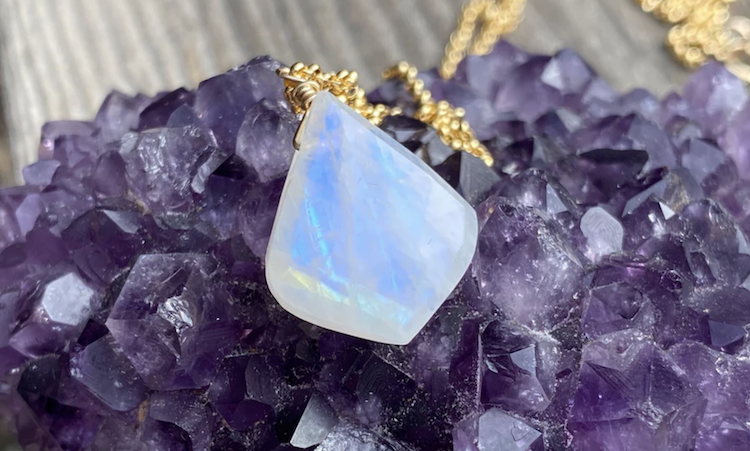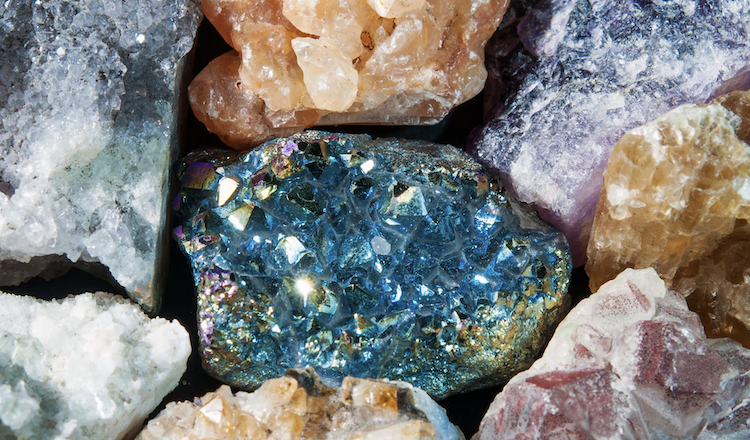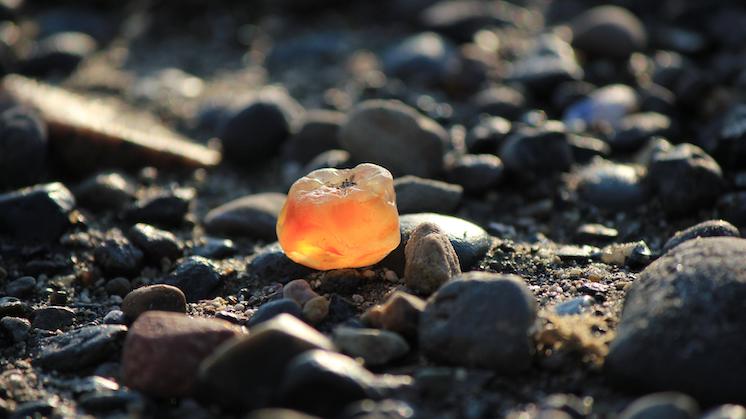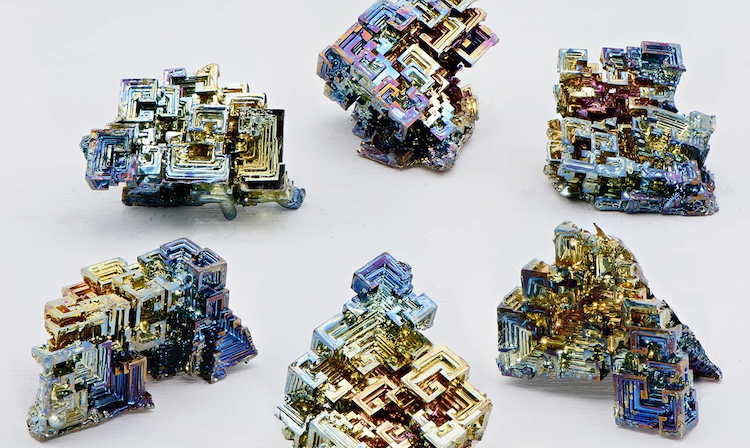How To Tell If A Rock Is A Geode?
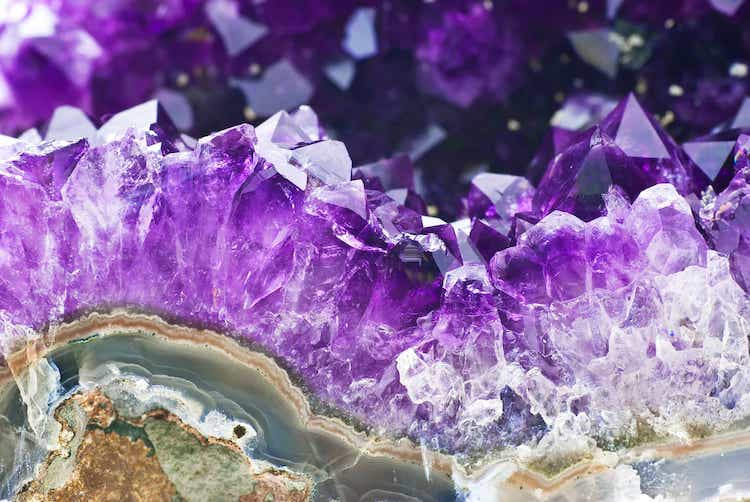
Are you going on a rock-hunting trip and wondering how to tell if a rock is a geode? Geodes typically have a round shape with a bumpy texture. They are also lighter in weight as compared to rocks.
Geode is a captivating geological wonder. It is a seemingly ordinary rock that harbors a dazzling secret within. Geodes are nature’s treasure chests, often hiding a breathtaking array of crystals and minerals.
They are like kinder eggs, that you can break open to see the marvelous crystals inside. But the problem is that it is not that easy to identify a geode among other rocks. Many of us have probably walked past plenty of geodes while tracking down a stream or a lake shore.
Geodes can be difficult to spot, but with the right information, and tips, you will be able to spot them without any issues. Let’s take a look in detail at how to tell if a rock is a geode or not.
What Are Geodes
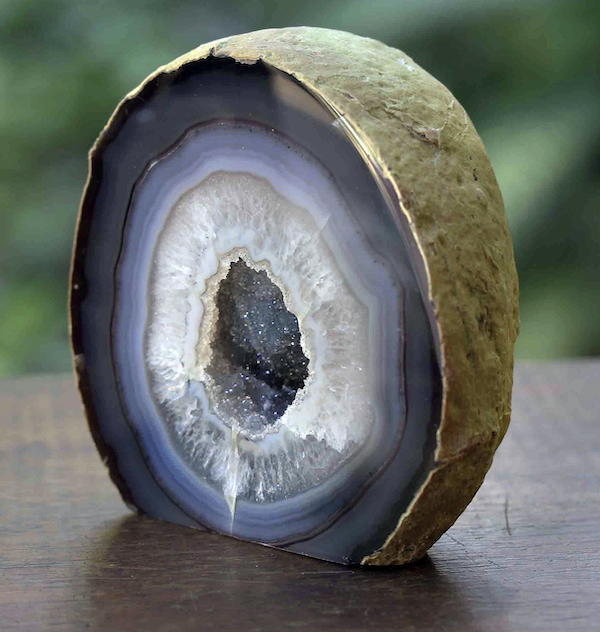
Geodes are geological formations that appear as ordinary rocks from the outside but contain a hollow cavity lined with crystals or mineral deposits inside.
These natural wonders are created through a combination of geological processes, including volcanic activity, sedimentation, and the presence of mineral-rich water.
The most common outer appearance of a geode is a round or oval shape, and they can vary in size from small, handheld specimens to large, room-sized formations.
How to Identify Geodes [Step-by-Step]
There are various ways to identify a geode such as:
- Learn about the location of the rock
- Check for the Shape
- Look for a bumpy texture
- Shake the rock and listen for any sound
- Compare the weight of the rock
- Break It Open
1. Learn about the location of the rock
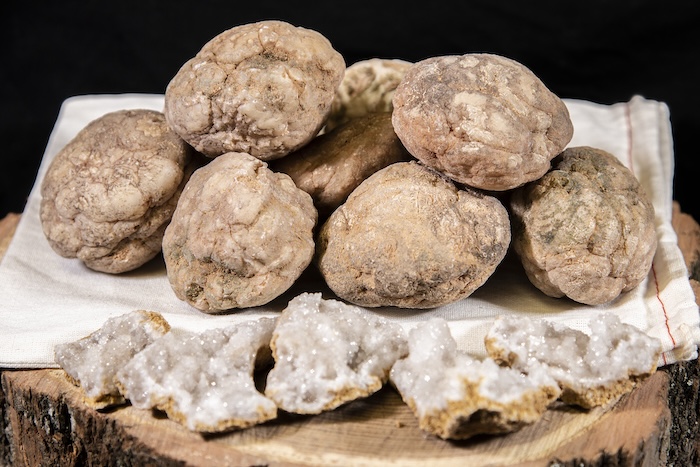
Understanding the geological context and where you find the rock is crucial in identifying whether it’s a geode.
Geodes are often associated with specific geological formations, such as volcanic rocks or sedimentary deposits. Research the local geology of the area and inquire about known geode locations.
Geodes are very common, but only in specific locations. For example, if you are walking around a park, and happen to find a rock, chances are that it’s just a common rock. Geodes are found in specific places with geological settings.
The best places to find geodes are lake beds, river beds, creeks, and beaches. Here are some of the best states in the US to look for geodes:
- Find geodes in Idaho
- Find geodes in Maine
- Find geodes in Utah
- Find geodes in Arkansas
- Find geodes in New Mexico
- Find geodes in Georgia
- Find geodes in Wisconsin
2. Check for the Shape
Geodes typically exhibit a rounded or oval shape, resembling a lumpy, unassuming rock. This distinctive shape is a result of the mineralization process occurring within the hollow cavity.
If a rock stands out due to its smooth, rounded appearance, it might be a geode. If you find a rock that has a lot of edges or is pointy, it is not a geode. Also, rule out rocks that are too narrow or skinny because geodes need space to form crystals inside.
Most geodes are the size of a baseball, although you might find smaller or larger specimens as well.
3. Look for a Bumpy Texture
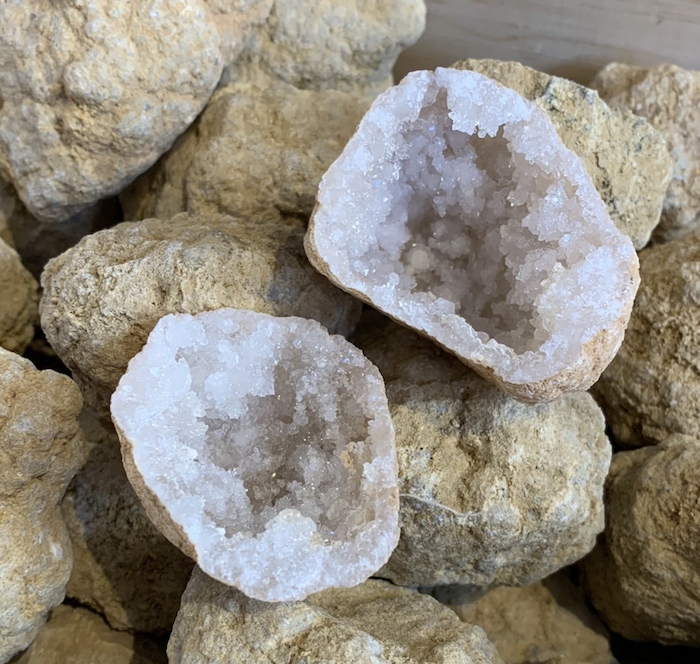
The external texture of a geode can provide valuable clues. Geodes often have a bumpy or irregular surface, indicating the presence of a hollow cavity within.
Run your fingers along the surface and take note of any protrusions or irregularities. It is very rare for a geode to have a smooth texture like a solid rock.
To be honest, geodes are pretty ugly rocks from the outside. They don’t have smooth exteriors and if you look closely, you might even spot little veins on the exterior of the crystals inside.
When we say bumpy, we don’t mean gritty. The lumps or bumps on the rock are visible and look almost organic. It is a dead giveaway that a rock is a geode.
4. Shake the Rock and Listen for Any Sound
While this method isn’t foolproof, shaking a rock gently and listening for any rattling or movement can sometimes indicate the presence of crystals inside.
The minerals within a geode can create a distinctive sound when the rock is shaken. Be cautious, though, as other types of rocks may also produce sounds.
Not all geodes make noise though as most don’t have any loose material inside. If you don’t hear anything, it’s time to check the rock by tapping it. Tap your rock on the ground, and listen to the sound it makes. You need to listen for a hollow sound.
If you are having trouble distinguishing the sounds, you can do the same with other rocks of the same size, and will instantly find the difference.
5. Compare the Weight of the Rock
Geodes are usually lighter than they appear. If a rock seems lighter than its size suggests, it might be a geode. This is due to the hollow cavity inside, which reduces the overall weight of the rock.
However, keep in mind that some geodes can be surprisingly heavy, depending on their mineral content.
Just hold two rocks together, one you think is a geode and one normal rock of the same size in each hand. You should probably be able to tell which one is a geode because they are lighter in comparison.
6. Break It Open

The last step on how to tell if a rock is a geode is by breaking it open. Breaking a rock open is the most definitive method to determine if it’s a geode. However, this step should be approached with caution, as it can damage the specimen.
If you are certain the rock is a geode and want to reveal its inner beauty, follow proper techniques for opening geodes.
There are various ways to open a geode but be prepared while doing so to make sure the crystals inside are not damaged.
How to Properly Open a Geode
Opening a geode requires a delicate touch to avoid damaging the crystals inside. Here’s a step-by-step guide on how to properly open a geode:
- Gather your tools: The first step is to gather your tools to open a geode. You will need: Safety goggles, a Hammer or rock pick, a Chisel or flathead screwdriver, a Towel or cloth to wrap the geode
- Safety First: Before you start, ensure you’re wearing safety goggles to protect your eyes from flying rock fragments.
- Wrap the Geode: Place the geode in the center of a towel or cloth, fold it over the rock, and secure it with your hands. This helps contain any flying debris when you break the geode.
- Find the Natural Crack: Examine the geode for any existing cracks or lines. If there’s a natural fault line, it will be easier to open the geode along these lines.
- Choose Your Strike Point: Hold the geode securely and identify a point along the natural crack or a weak point on the surface. Aim your hammer or rock pick at this spot.
- Apply Controlled Force: Using controlled force, strike the geode at the chosen point. It’s essential to strike the geode with enough force to crack it open, but not so much that you shatter the crystals inside.
- Inspect the Contents: Once the geode is open, carefully inspect the interior. Admire the dazzling crystals and minerals that were hidden within. Take note of the colors, shapes, and overall composition.
Common Minerals Inside a Geode
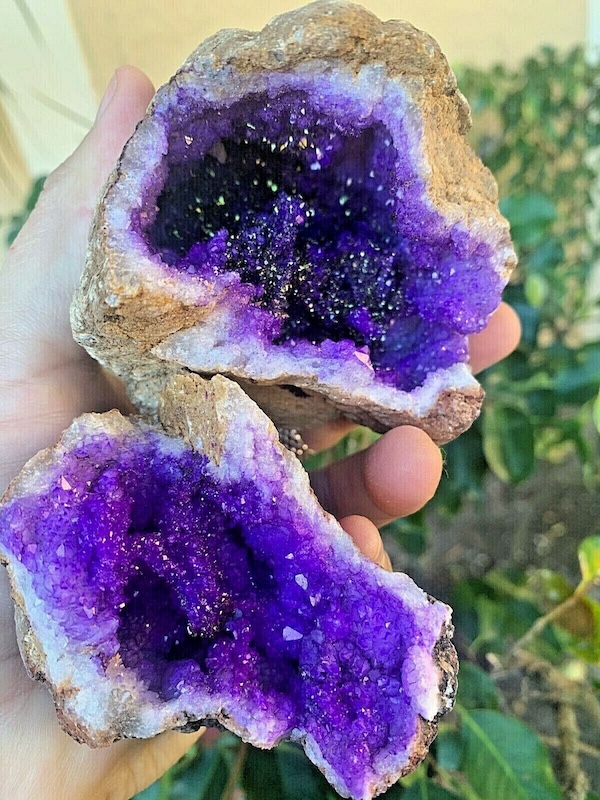
Now that you know how to tell if a rock is a geode, let’s take a look at the minerals found inside the stone. The allure of geodes lies in the stunning array of minerals and crystals that can be found within.
While the specific minerals can vary depending on the geological context, some common minerals found inside geodes include:
Quartz Crystals:
Quartz is one of the most prevalent minerals found inside geodes. These crystals come in various colors, including clear, purple (amethyst), pink (rose quartz), and smoky quartz.
Calcite:
Calcite crystals often form within geodes, showcasing a range of colors from white and yellow to orange and red. The crystals can appear in various shapes, adding visual interest to the geode’s interior.
Celestite:
Recognized for its sky-blue color, celestite crystals can form beautiful clusters inside geodes. The delicate, elongated crystals create a striking contrast to other minerals.
Agate:
Agate is a form of chalcedony that frequently lines the inner walls of geodes. It forms bands of different colors, creating captivating patterns and designs.
Amethyst:
Amethyst, a purple variety of quartz, is highly sought after and commonly found within geodes. The deep purple hues of amethyst crystals add a touch of regal beauty to the interior.
Chalcedony:
Chalcedony, with its waxy luster, often forms in layers within geodes. It can exhibit various colors, including blue, pink, and white, contributing to the geode’s overall aesthetic.
Conclusion
Now you know how to tell if a rock is a geode. Identifying a geode is a thrilling journey into the Earth’s geological wonders, and opening one is like unwrapping a natural gift. By following the steps outlined in this guide, you can increase your chances of recognizing these hidden treasures in the rocks around you.
So, the next time you stumble upon a seemingly ordinary rock, remember that it might just be a geode waiting to reveal its dazzling secrets.


